Understanding Nostr Relays: The Backbone of the Decentralized Protocol
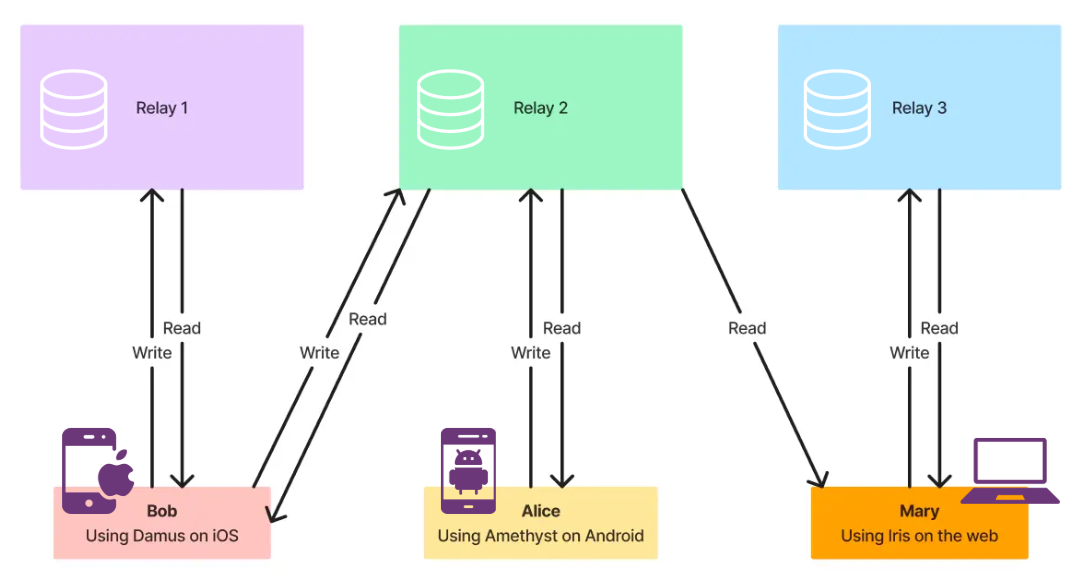
Nostr is a protocol designed to create a decentralized, censorship-resistant communication on the internet.
But how does it actually work?
At the heart of Nostr are relays—servers that store and distribute data.
In this post, we’ll break down what Nostr relays are, how they function, and what their future might hold, all in a way that’s easy to grasp but still digs into the technical side.
What Are Nostr Relays?
Nostr stands for "Notes and Other Stuff Transmitted by Relays."
The name gives it away: relays are the key to making Nostr work.
Imagine a relay as a kind of middleman in a decentralized messaging system. They’re servers that users connect to in order to send, receive, and store messages (called "events" in Nostr lingo).
These events can be anything from a tweet-like post, an instagram image post or a TikTok video post, a profile bio update or even encrypted direct messages.
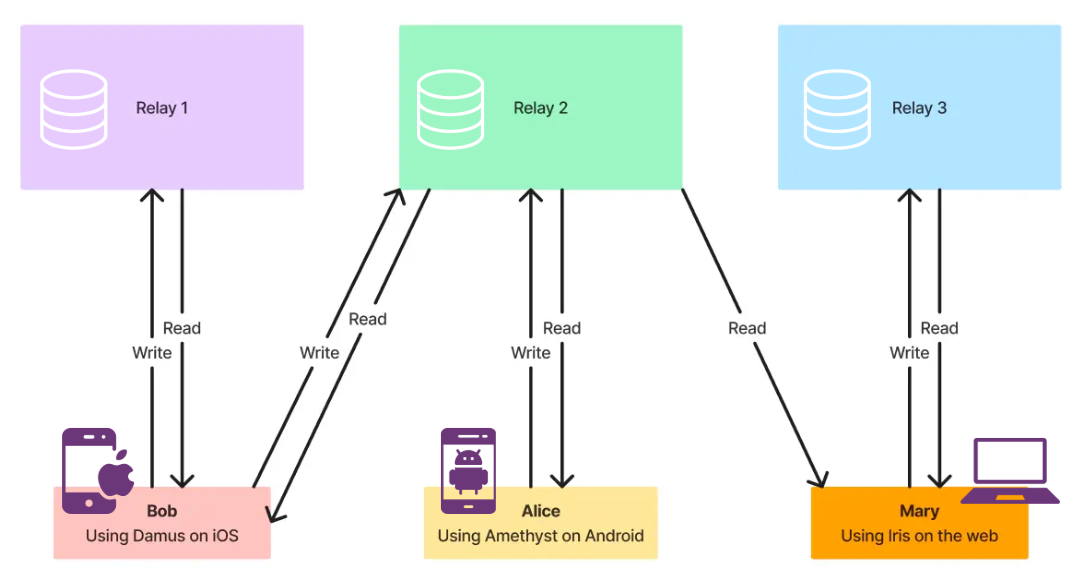
Here’s the simple part: unlike Twitter or Facebook, where one company controls all the servers, Nostr relies on a network of independently run relays.
Anyone can set up a relay—think of it like hosting your own email server.
Users choose which relays they want to connect to, and those relays handle the job of passing data around.
Now for the technical bit:
Nostr relays operate using WebSockets, a technology that keeps an open, two-way connection between your client (like a Nostr app) and the relay.
When you post something, your client sends an event—a JSON-formatted blob of data with details like your public key, a timestamp, and the content—to one or more relays.
The relay stores it and shares it with other connected clients who’ve subscribed to your updates. No central authority, no single point of failure.
How Do Relays Work?
Let’s walk through the process:
- Posting an Event: You write a note in a Nostr client (e.g., Damus or Primal). The client signs the event with your private key, proving it’s from you, and sends it to the relays you’re connected to.
- Storing and Forwarding: The relay accepts the event, stores it (if it meets its rules), and forwards it to other clients who’ve asked to see events from your public key or related topics.
- Subscribing: Other users’ clients connect to relays and say, “Hey, send me events from this person or with this hashtag.” The relay streams those events in real time over WebSockets.
- Redundancy: You can send your event to multiple relays. If one goes down or censors you, others can still serve your data.
Relays don’t have to store everything forever—they can set their own policies. Some might keep data for a week, others indefinitely.
Some might charge a fee or require authentication. It’s up to the relay operator, which keeps the system flexible and decentralized.
This great little interactive presentation will help you understand how Nostr and relays work.
Where to find relays
If you’re looking for Nostr relays, there are several ways to find them.
Most Nostr clients (e.g., Damus, Primal, or Nosky) come with a pre-configured list of public relays.
When you install a client, it typically connects to a handful of relays automatically—often popular ones like wss://relay.damus.io or wss://nostr-pub.wellorder.net.
Check your client’s settings under “Relays” or “Network” to see the list. This is the easiest starting point for new users.
The website nostr.watch is a good resource for browsing active relays. It provides a real-time list of public relays with details like uptime, speed, and supported NIPs (Nostr Implementation Possibilities).
Paid relays often offer better performance or spam protection due to the “proof of work” of payment. Examples include relays charging via Bitcoin Lightning, like nostr.land.
Other ways to find relays
Scaling and the Future of Nostr Relays
As Nostr grows, relays face some big questions.
- How do they handle millions of users?
- What happens when the network gets flooded with events?
- Where is this all headed?
Scaling Challenges
Right now, Nostr relays are pretty lightweight. A single server can handle thousands of users because events are small and WebSockets are efficient.
But if Nostr explodes in popularity—say, millions of people posting constantly—relays could get bogged down.
Storage is another issue. A relay holding every event from every user would need massive disk space over time. Bandwidth could also become a bottleneck if too many clients are pulling data at once.
Solutions in Progress
The Nostr community is already thinking ahead.
One idea is specialized relays. Instead of every relay storing everything, some could focus on specific niches—like a relay for developers, one for artists, or one for a geographic region.
Clients could then connect to only the relays they care about, reducing load. Another approach is ephemeral relays that don’t store data long-term, paired with archival relays for permanent storage.
There’s also talk of peer-to-peer relays, where users’ own devices help distribute data, cutting reliance on central servers.
The Future of Nostr Relays
The beauty of Nostr relays is their adaptability. As the protocol evolves, we might see paid relays emerge, offering premium features like faster speeds or guaranteed uptime.
Relay discovery could get smarter, with clients automatically finding the best relays based on latency or reputation. And with advances in decentralized tech—like IPFS or DHTs—relays might integrate with other systems to make Nostr even more resilient.
The big picture? Nostr relays could become a foundation for not just social networking, but all kinds of decentralized apps. Imagine relays handling secure voting, marketplaces, or collaborative projects—all built on the same simple, open protocol.
Nostr relays are the unsung heroes of this decentralized experiment. They’re simple enough for anyone to run, yet technical enough to power a robust network. By spreading data across many independent servers, they make Nostr censorship-resistant and user-controlled.
Scaling will be a challenge as adoption grows, but the community’s already brainstorming clever fixes.
The future of Nostr relays isn’t set in stone it’s wide open, and that’s what makes it exciting.
Thanks for reading.
If you’re interested in running your own relay, here is a list below of the most popular ones available.
Thanks for reading ON NOSTR ! Subscribe for free to receive new posts and support my work.
List of Nostr Relay Applications
A simple reference relay implementation built on the Relayer framework, designed for creating custom relays.
Backend: Uses PostgreSQL for data storage.
Purpose: Serves as a demo or starting point for developers building tailored relays.
A lightweight relay implementation written in C++.
Backend: Database-less, meaning it doesn’t rely on persistent storage like SQL, making it lean and fast.
Purpose: Focused on simplicity and performance for minimal setups.
Bitvora is a group or entity focused on building tools for the Nostr protocol, and they’ve released a couple of notable relay implementations including:
Algo-Relay - A Nostr relay with a built-in algorithmic feed, written in Go (Golang). It’s designed to personalize the user experience by prioritizing content based on interaction history and network popularity.
Haven - A “High Availability Vault for Events on Nostr,” also written in Go. It’s a personal relay with advanced features for sovereignty and privacy.
A private relay written in Rust, designed to store all notes from a single public key and share them on request.
Backend: Custom storage, likely in-memory or file-based (not explicitly specified).
Purpose: Ideal for personal or small-group use cases requiring privacy.
Nostream (formerly nostr-ts-relay)
A feature-rich relay written in TypeScript.
Backend: PostgreSQL for robust data management.
Purpose: Supports advanced features like paid relays (e.g., via Lightning Network integration with ZEBEDEE) and is widely used for production-grade setups.
A relay tailored for Minds, an open-source social network.
Backend: Not fully specified, but integrated with Minds’ infrastructure.
Purpose: Bridges Nostr with the Minds ecosystem for social networking.
Description: A relay built with NestJS, emphasizing clear architecture and high test coverage.
Backend: Uses PostgreSQL and MeiliSearch for storage and search.
Purpose: Geared toward developers wanting a structured, maintainable relay with search capabilities.
A serverless relay designed for Cloudflare Workers.
Backend: Cloudflare KV store for distributed storage.
Purpose: Optimized for scalability and low operational overhead using serverless architecture.
SuperConductor Nostr-Relay Framework & Web Application
A Java-based relay framework using Spring Boot and WebSocketSession.
Backend: Built atop the nostr-java library.
Purpose: Provides a clean, enterprise-ready option for relay hosting.
A relay written in Clojure.
Backend: Not explicitly detailed, likely lightweight storage.
Purpose: Appeals to developers familiar with Clojure for custom relay projects.
A Python-based relay, part of a broader toolset including clients.
Backend: Flexible storage options (not specified in detail).
Purpose: Offers a Pythonic approach for developers building relays and related tools.
A relay designed to run on Android phones via Termux.
Backend: Minimal, likely file-based or in-memory.
Purpose: Enables mobile-hosted relays for decentralized experimentation.
A one-click relay solution integrated with LNbits.
Backend: Configurable, often with payment options tied to Bitcoin Lightning.
Purpose: Simplifies relay deployment with built-in monetization features.
Thanks for reading ON NOSTR ! Subscribe for free to receive new posts and support my work.
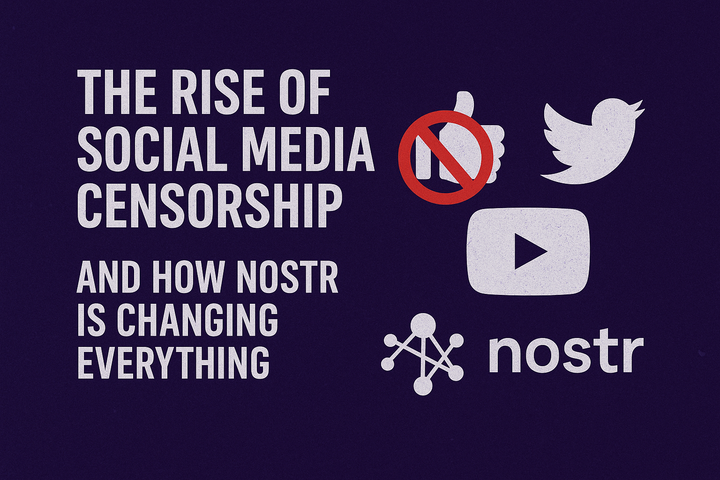
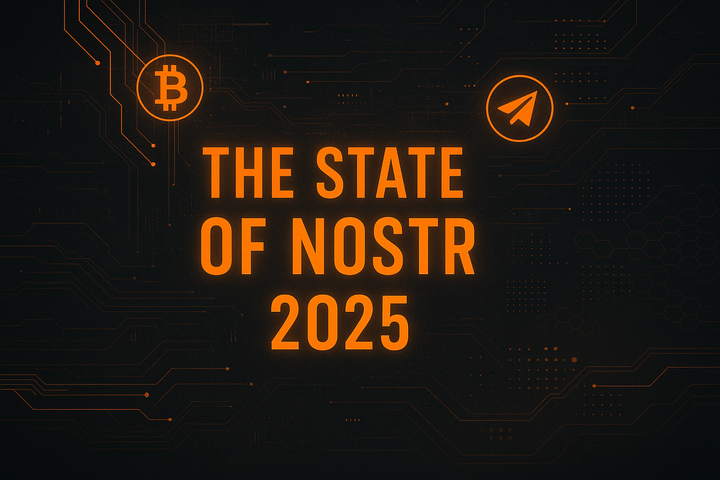
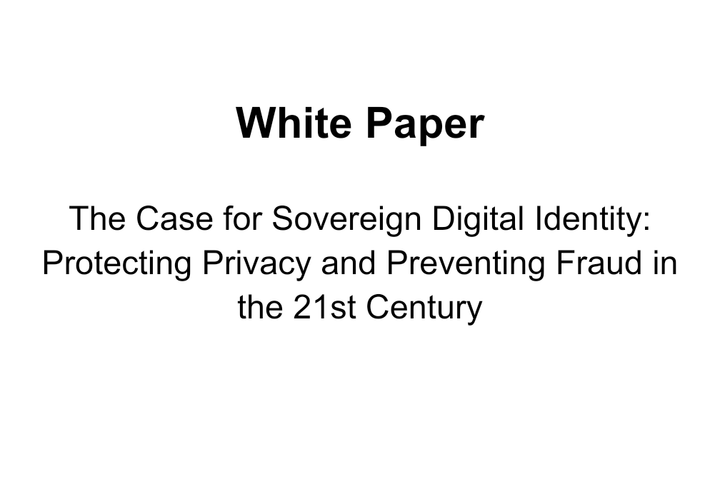
Comments ()